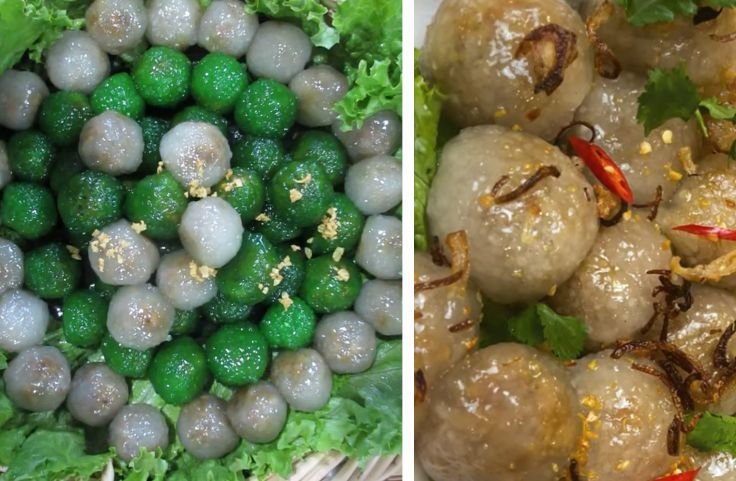Tapioca dumplings bring you a chewy, gluten-free bite filled with rich flavor. From Thailand to Brazil, they offer a world of texture and taste in every wrapper.
Tapioca dumplings have earned a place on dining tables across the world, celebrated for their chewy bite and the way they adapt to different flavors.
You might enjoy them as a savory street food in Taiwan or as a warm comfort snack in Brazil, yet the appeal remains the same.
Their growing popularity comes from how easily they fit into traditional meals and modern recipes alike, giving you countless ways to enjoy them.
Some versions highlight sweetness with coconut milk and palm sugar, while others focus on hearty fillings like meat, seafood, or vegetables.
No matter how they are prepared, tapioca dumplings continue to cross cultures and inspire new variations, making them a dish worth adding to your food journey.
Recommended:
What Are Tapioca Dumplings?
Tapioca dumplings are chewy, translucent dumplings made from tapioca pearls or starch, derived from the root of cassava.
Known for their distinctive texture, they are enjoyed in both savory and sweet variations across different cuisines.
In Asian cooking, they are often filled with seasoned meats, seafood, or vegetables, while in Latin American and African traditions, they may feature spiced fillings or be served as simple boiled or steamed dough.
Their versatility allows them to absorb flavors well, making them a unique and culturally diverse dish.
Related Posts
Gluten-Free Benefits Of Tapioca Waffles
How to Make Vegan Cassava Flour Waffles Without Eggs Recipe
Ingredients for Tapioca Dumplings
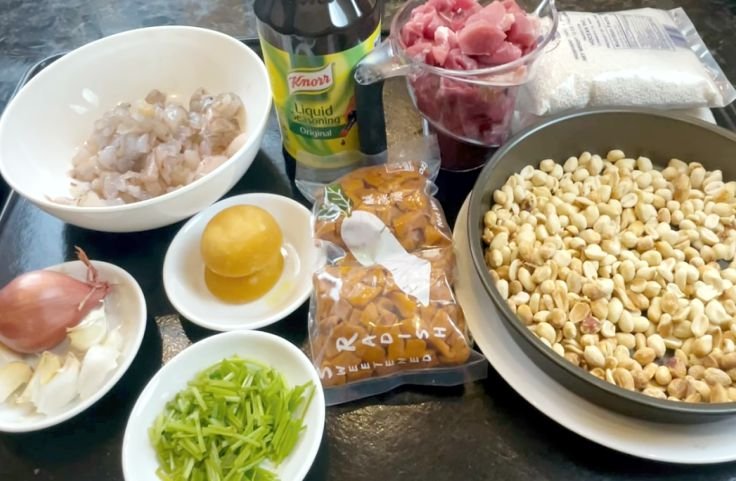
When you make tapioca dumplings, three ingredients form the base: tapioca pearls, fillings, and water.
Tapioca pearls form the seal and can shape dumplings that hold fillings ranging from savory meats and vegetables to sweet coconut and palm sugar.
Each ingredient adds a distinct role to flavor.
Prepare the Tapioca Pearls

Rinse small tapioca pearls. Simmer in plenty of water until mostly translucent with a tiny white core (8–12 minutes).
Turn off the heat, cover 5 minutes to finish. Drain, rinse under cold water, and set aside to prevent clumping.
Prep Aromatics and Seasoning
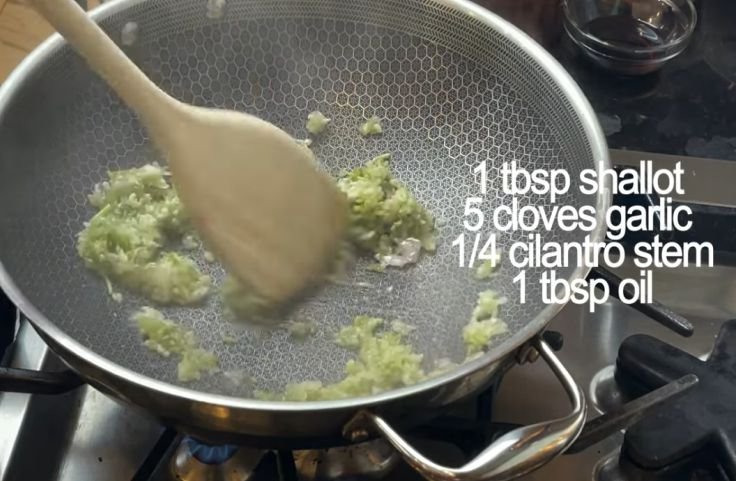
Finely mince garlic and shallot; chop cilantro stems. Combine with a pinch of black pepper and a tiny pinch of salt (if using). This aromatic mix will season all savory fillings.
Pork Filling

Sauté a little oil, then soften half of the garlic–shallot mix. Add minced pork and stir-fry until no longer pink.
Season with black pepper and chopped cilantro stems. Cook off moisture; cool completely.
Add Preserved Shredded Radish

Add Palm Sugar
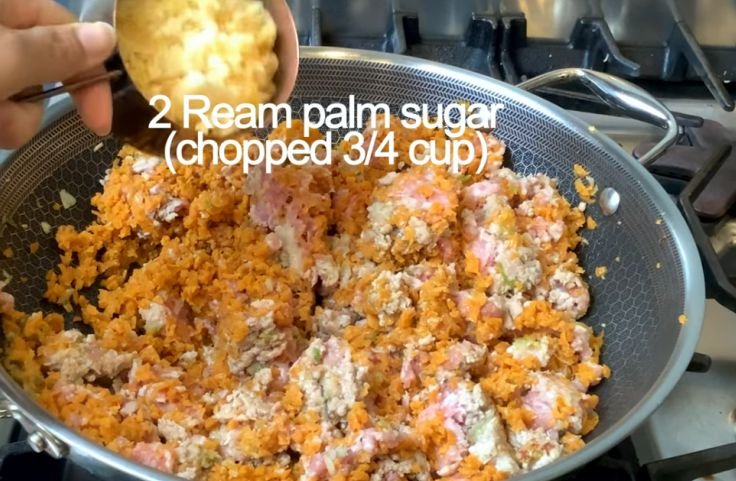
Add Shrimp

Add Tapioca Starch and Black Pepper
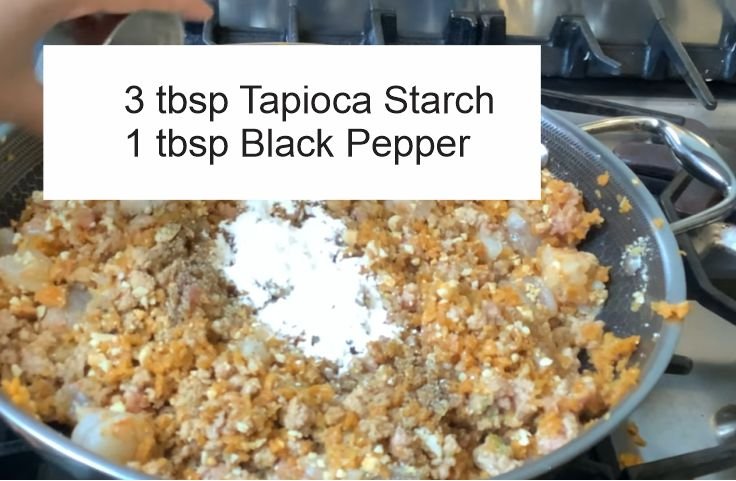
Add Roasted and Blended Peanuts
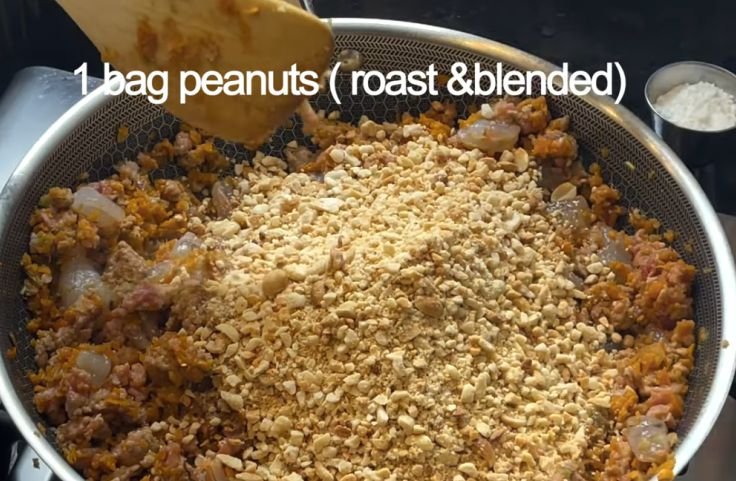
Combine the Entire Mixture and Continue Cooking
When thoroughly cooked and tender, turn off the heat and allow to cool before molding into desired balls.
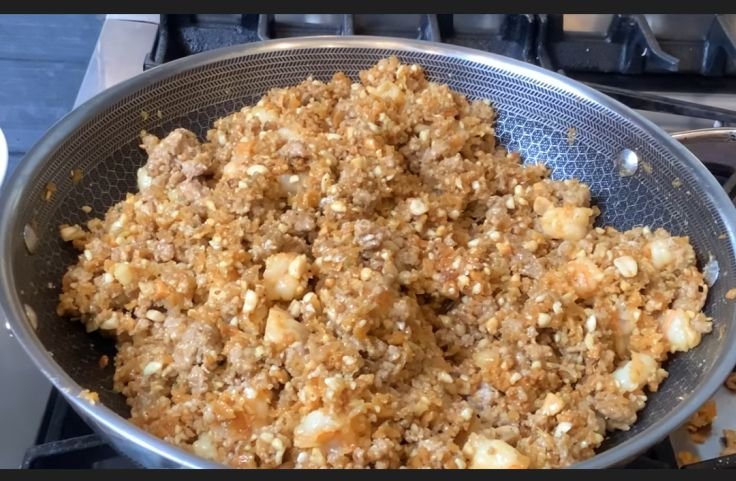
Turn off the Heat and Allow to Cool
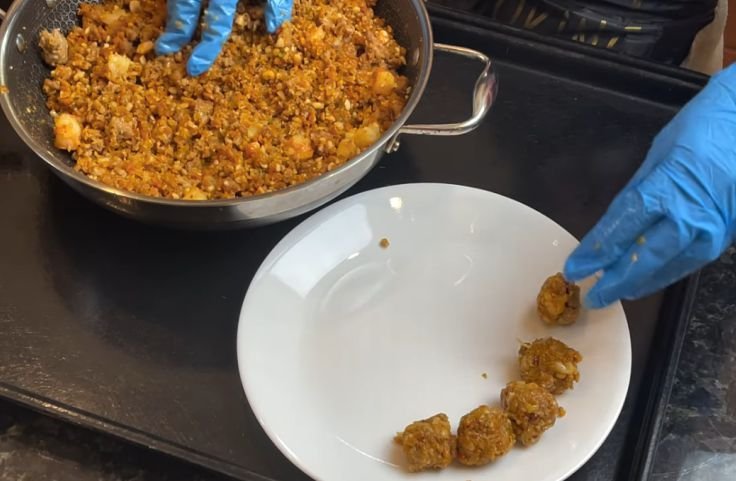
Mold the fillings into Your Desired Balls
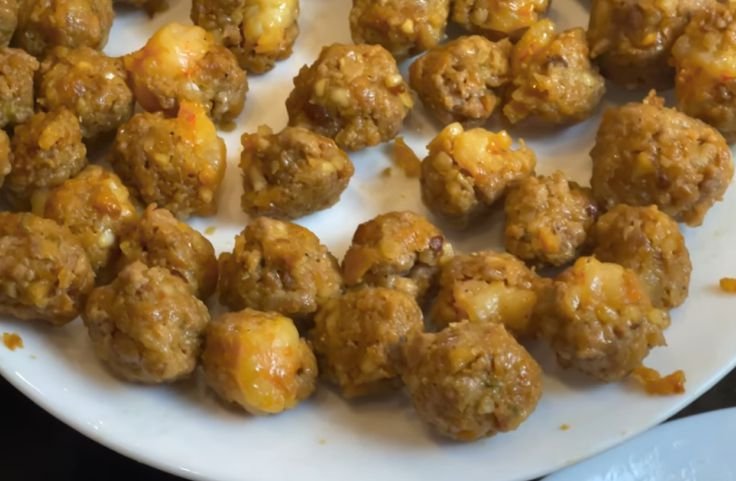
Fill into Falttened Tapioca Pearls and Seal
Place a small spoon of your filling in the center of the molded and flattened tapioca pearls (do not overfill). Bring edges up, pinch, and twist to seal.
Smooth seams with lightly oiled fingers. For pearls-in-dough, press gently so pearls don’t poke through.

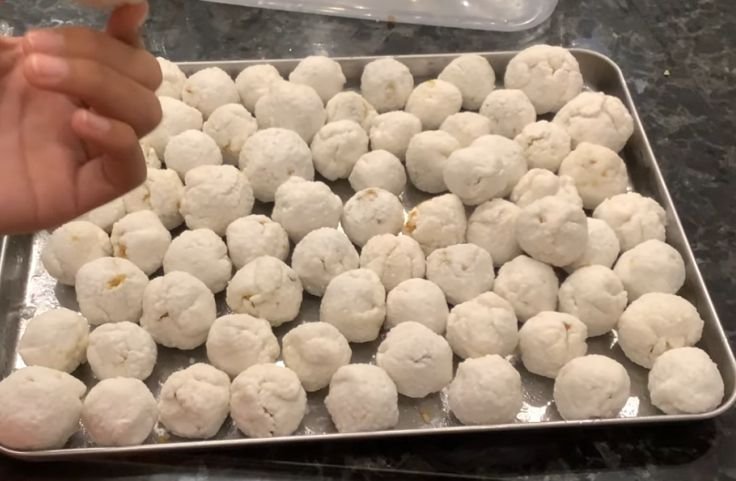
Steam Until Translucent
Steam over medium-high heat until wrappers turn glossy and translucent: 8–12 minutes for small dumplings, 12–15 for larger.
Pork/veg should be hot and cooked through; shrimp should be opaque.Oil to Prevent Sticking
Brush a steamer tray/linen or banana leaves with a thin film of oil. Lightly oil the dumplings’ bottoms so they release cleanly after cooking and keep a glossy finish.

Rest, Release, and Serve

Let dumplings rest 2 minutes to firm, then lift with an oiled spatula. Top savory dumplings with fried shallots and a crack of black pepper; serve with a light dip (soy + water + sugar + lime/black pepper).
Serve sweet palm sugar dumplings plain or with coconut cream.
Related: The Best Tapioca Pearls for Pudding
How to Make Tapioca Dumplings at Home
Making tapioca dumplings at home gives you full control over flavor and texture.
With just tapioca flour, water, and a filling of your choice, you can create a satisfying dish that fits your taste.
Gather Your Ingredients
To prepare tapioca dumplings, you need tapioca flour, water, and a filling of choice such as shrimp, minced meat, or vegetables.
Fresh herbs and light seasoning improve the overall flavor.
Having everything ready before mixing ensures the process flows smoothly and saves time in the kitchen.
Make the Dough
Heat water until it starts to boil, and add tapioca flour slowly while stirring.
This prevents lumps and creates a smooth dough. If the dough feels sticky, add flour.
If dry, add water. Aim for a soft yet elastic consistency before shaping dumplings.
Shape the Dumplings
Take a small piece of dough, roll it into a ball, then flatten slightly. Place your filling in the center, fold the dough over, and seal the edges tightly.
Proper sealing prevents fillings from escaping during cooking and keeps dumplings neat and well-formed.
Cook the Dumplings
Choose a cooking method that matches your preference. Boil dumplings until they float for a simple method.
Steam them for softness, or fry for a crisp bite. Watch the timing carefully, as overcooking makes dumplings tough while undercooking leaves doughy centers.
Related: Cassava Pancake Mix vs Cassava Flour Pancake Mix
Popular Types of Tapioca Dumplings Around the World
Tapioca dumplings give you a chewy bite that works beautifully with both sweet and savory fillings.
Their gluten-free nature makes them welcome in many cuisines, each one adding local flavors to this comforting dish.
Let’s look at some of the best-known versions from around the world.
Thai Tapioca Dumplings: Sakoo Sai Moo
Thai tapioca dumplings, known as sakoo sai moo, bring you a perfect balance of flavor and texture.
You prepare them with tapioca flour, which gives the chewy wrapper, and then fill them with minced pork, crushed peanuts, and herbs.
Steamed until the translucent skin reveals the colorful filling, they are as beautiful as they are tasty.
Street vendors often serve them with fried garlic, fresh coriander, and lettuce leaves for wrapping, creating a full bite in every mouthful.
This dish shows why Thai tapioca dumplings are loved across the country, offering a mix of sweet, salty, and savory in one.
Vietnamese Tapioca Dumplings Recipe: Banh Bot Loc
Vietnamese tapioca dumplings, or banh bot loc, are a treat you will not forget.
The dough is made with tapioca flour and water, creating a chewy and slightly translucent skin once steamed.
Inside, you usually find shrimp and pork marinated with spices for bold flavor.
After steaming, the dumplings are topped with fried shallots and served with a sweet and tangy fish sauce dip.
Every bite offers chewiness from the wrapper, tenderness from the meat, and a touch of crunch from the toppings.
When you try this Vietnamese tapioca dumplings recipe, you taste the balance of texture and flavor.
Lao Tapioca Dumplings: Khao Nom Sakoo
In Laos, khao nom sakoo is a beloved version of steamed tapioca dumplings that resembles the Thai sakoo sai moo but carries its own style.
You make them with a tapioca flour dough filled with seasoned pork, peanuts, and sometimes small bits of pickled radish.
The dumplings are steamed until translucent, then brushed lightly with oil to keep them glossy and soft.
They are served with fresh lettuce leaves, chilies, and herbs, letting you create little wraps for each bite.
Lao tapioca dumplings give you chewiness, freshness, and spice in a simple dish that feels hearty and satisfying every time.
Shrimp Tapioca Dumplings: A Seafood Favorite
Shrimp tapioca dumplings are popular in many Asian cuisines, especially when you want seafood flavors to shine.
The filling is usually made from whole or chopped shrimp seasoned with garlic, pepper, or coriander.
Once wrapped in tapioca dough and steamed, the dumplings become translucent, allowing the pink shrimp to peek through.
They are chewy on the outside yet tender and juicy inside. Some recipes add pork or vegetables to balance the taste.
These shrimp tapioca dumplings are delicious as appetizers or side dishes, giving you a seafood-forward option that feels light but still deeply satisfying with every mouthful.
Steamed Tapioca Dumplings: A Classic Cooking Method
Steaming is one of the most common ways to prepare tapioca dumplings because it highlights their chewy texture.
You create the dough with tapioca flour and water, then add savory or sweet fillings before steaming until translucent.
The dumplings stay soft, glossy, and slightly sticky, making them easy to enjoy with dipping sauces or fresh herbs.
Popular in Thailand, Laos, Vietnam, and China, steamed tapioca dumplings let the flavor of the filling stand out while the wrapper adds a satisfying chew.
If you enjoy light, flavorful food, steaming gives you the best balance of taste and texture in dumplings.
Chinese Tapioca Dumplings: A Regional Specialty
Chinese tapioca dumplings showcase how this ingredient adapts to regional cooking traditions.
In some parts of southern China, tapioca starch is used to make dumpling wrappers that are clear and chewy after steaming.
Fillings may include shrimp, pork, mushrooms, or bamboo shoots, flavored with soy sauce, ginger, and garlic.
These dumplings are enjoyed with dipping sauces that balance salty, sweet, and savory notes.
Chinese tapioca dumplings bring you a different take on dim sum, offering a gluten-free wrapper that still delivers full flavor.
If you love dumplings, this variation gives you another reason to enjoy tapioca.
Related: How to Make Yuca Fries Dipping Sauce
Serving and Pairing Ideas
Tapioca dumplings can be enjoyed with a range of sauces and sides that highlight their chewy texture.
Soy dipping sauce gives a savory depth, while chili oil adds a spicy kick.
For a sweet twist, coconut syrup pairs well, creating a balance of flavors.
Serve them with fresh vegetables like bok choy, green beans, or salad for crunch, or add stir-fried rice and quinoa for a heartier meal.
Light teas such as jasmine or green tea complement without overpowering.
Presentation matters too: arrange dumplings neatly on a platter, garnish with cilantro or green onions, and offer a variety of dipping sauces.
This not only enhances visual appeal but also makes dining interactive and enjoyable, perfect for gatherings or simple meals at home.
Tapioca Dumplings for Special Diets
Tapioca dumplings fit into many diets without losing their taste or texture.
Made from tapioca flour, they are naturally gluten-free and easy to adapt for plant-based and low-oil meals.
Gluten Free Comfort
If you live with gluten sensitivity or celiac disease, tapioca dumplings give you a safe and enjoyable choice.
The chewy texture makes them just as satisfying as wheat-based dumplings.
Pair them with light broths or dipping sauces to keep flavors balanced and comforting.
Vegan and Vegetarian Options
You can easily adapt tapioca dumplings for plant-based eating. Use fillings like mushrooms, spinach, garlic, or tofu for flavor and nutrition.
Mashed sweet potatoes and seasoned vegetables also work well, offering variety while keeping the dish wholesome and full of taste.
Low Oil and Baked Dumplings
If you prefer lighter meals, bake your dumplings instead of frying. Place them on parchment paper and brush lightly with oil or use a spray.
This method gives you a crispy finish without excess oil, keeping your dumplings healthier yet still flavorful.
Storage and Reheating Tips
Keeping tapioca dumplings fresh depends on how you store and reheat them.
With the right steps, you can enjoy their chewy texture and flavor long after they are first cooked.
Storing in the Refrigerator
Let dumplings cool to room temperature before placing them in an airtight container.
This prevents condensation, which can cause spoilage.
Stored properly, they remain fresh for two to three days while keeping their chewy bite and pleasant taste.
Freezing for Longer Use
For longer storage, freeze dumplings in a single layer on a parchment-lined tray. Once firm, transfer them into freezer-safe bags or containers.
Remove excess air, label with a date, and enjoy them within three months.
Reheating for Best Texture
Steam the refrigerated dumplings to bring back softness without drying them.
If using a microwave, cover with a damp paper towel to retain moisture.
For frozen dumplings, thaw overnight in the fridge before steaming or lightly sautéing for the best results.
Conclusion
Tapioca dumplings bring you a chewy, gluten-free bite filled with rich flavor. From Thailand to Brazil, they offer a world of texture and taste in every wrapper.
Their growing appeal comes from how well they adapt to both savory and sweet fillings, fitting into everyday meals and festive occasions alike.
You can enjoy them as street food in Asia, comforting snacks in South America, or homemade treats in your kitchen.
With fillings ranging from meat and seafood to vegetables and coconut, there’s a version for every craving.
Simple to make and easy to customize, tapioca dumplings show the power of cassava in global cuisine.
Add them to your food journey and discover endless ways to enjoy them
Frequently Asked Questions
What fillings can you use for cassava dumplings?
Cassava dumplings work with many fillings. Popular choices include minced pork, shrimp, vegetables, mushrooms, and coconut with palm sugar. Each filling creates a different taste and texture.
How do you cook cassava dumplings?
You can steam, boil, or fry cassava dumplings. Boiling is the simplest, steaming keeps them soft, and frying gives a crispy outside while keeping the chewy center.
Are cassava dumplings gluten-free?
Yes, cassava dumplings are naturally gluten-free because they are made with cassava or tapioca flour. This makes them suitable for people with gluten sensitivity or celiac disease.
References
- Tapioca Pearl Dumplings with Pork & Shrimp Filling
- Step By Step Recipe | Saku Sai Moo | Pork Stuffed Tapioca Dumpling

Chimeremeze Emeh is a writer and researcher passionate about Africa’s most transformative root crop—cassava. Through his work at cassavavaluechain.com, he explores the entire cassava industry, from cultivation and processing to its diverse applications in food, health, and industrial use.
He also writes for palmoilpalm.com, where he shares his extensive experience and deep-rooted knowledge of palm oil, covering red palm oil, palm kernel oil, and refined products. His work there reflects his lifelong connection to agriculture and his commitment to promoting sustainable value chains in Africa.
Driven by curiosity and purpose, Chimeremeze aims to shed light on how cassava continues to empower communities, strengthen food systems, and link traditional farming wisdom with modern innovation.

